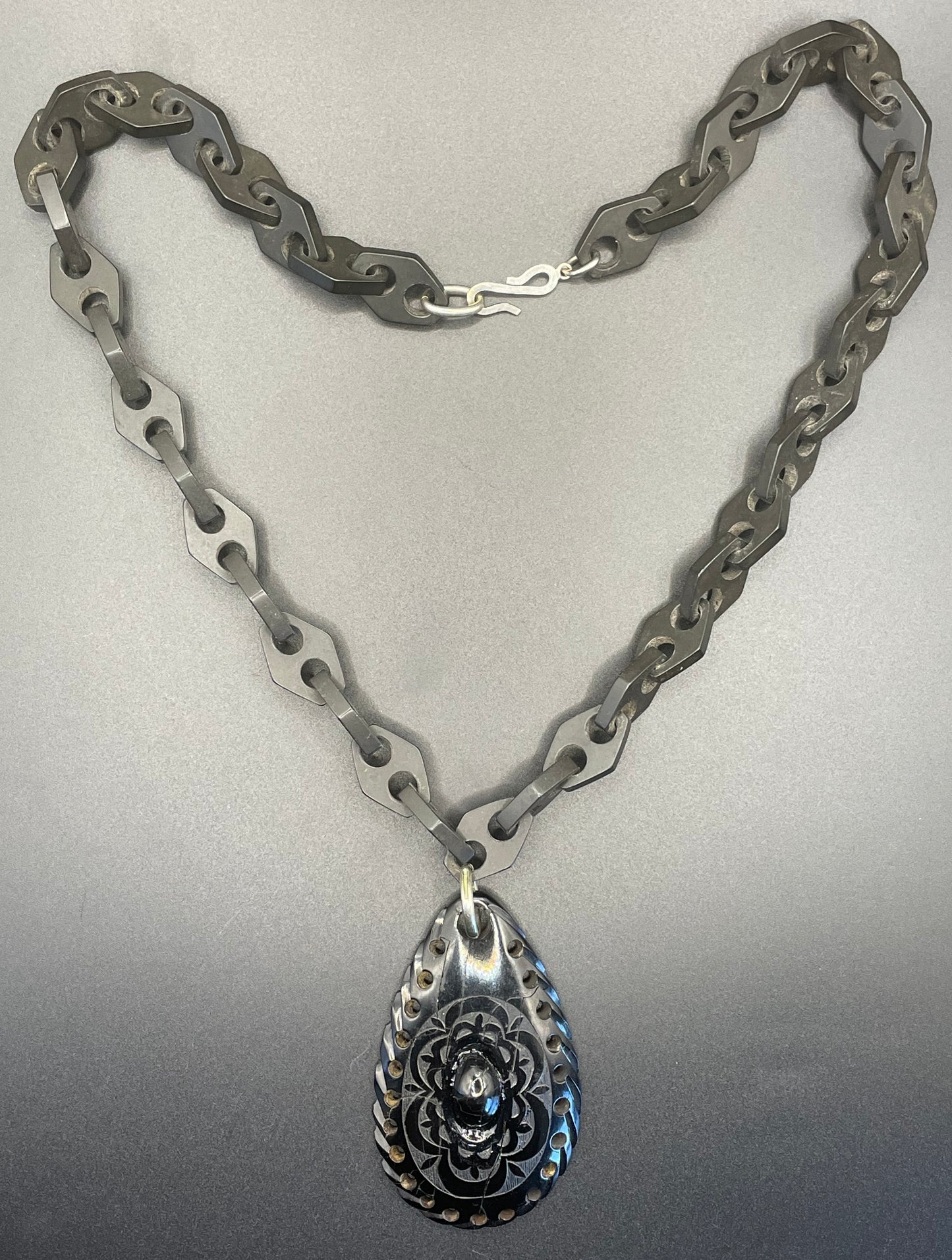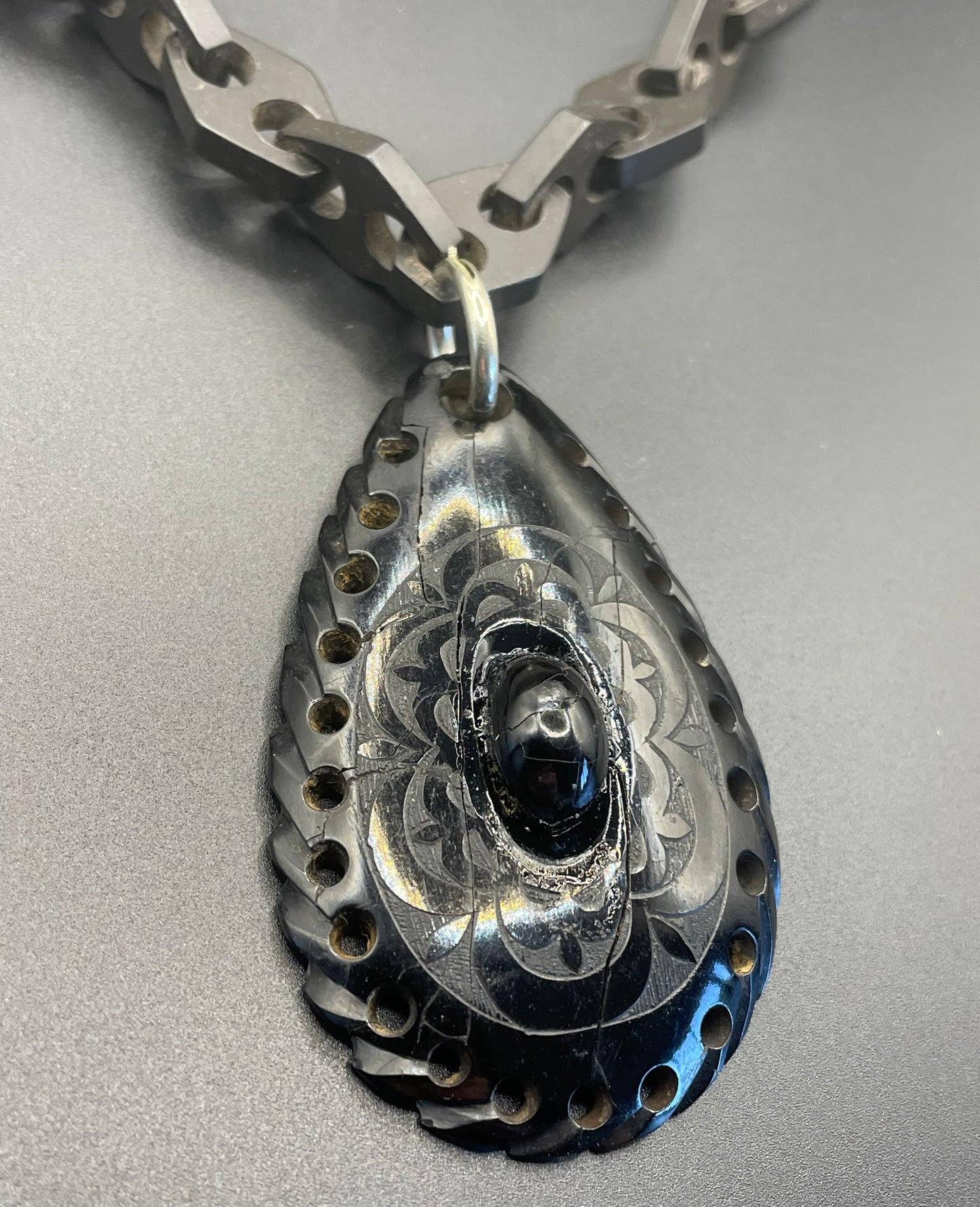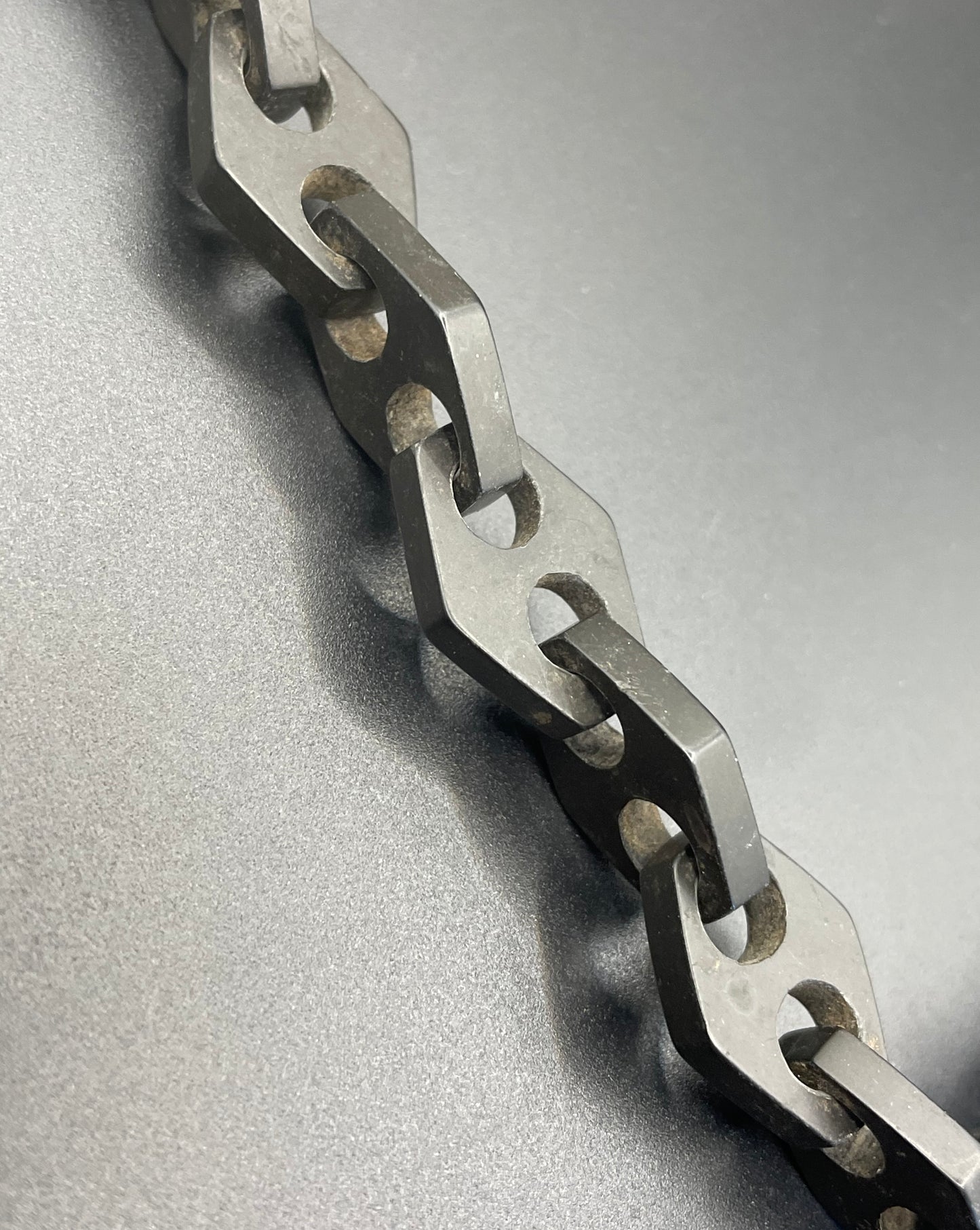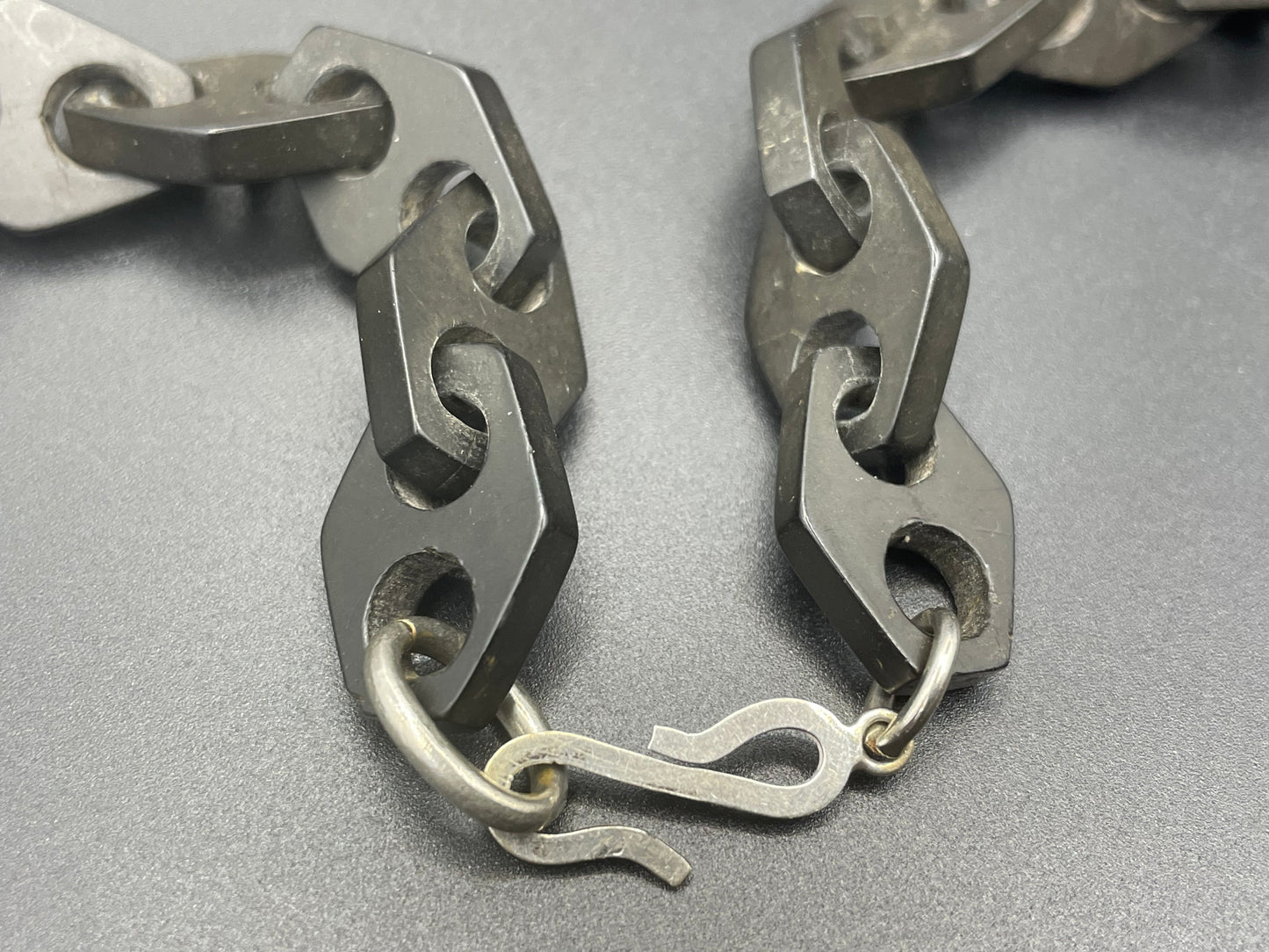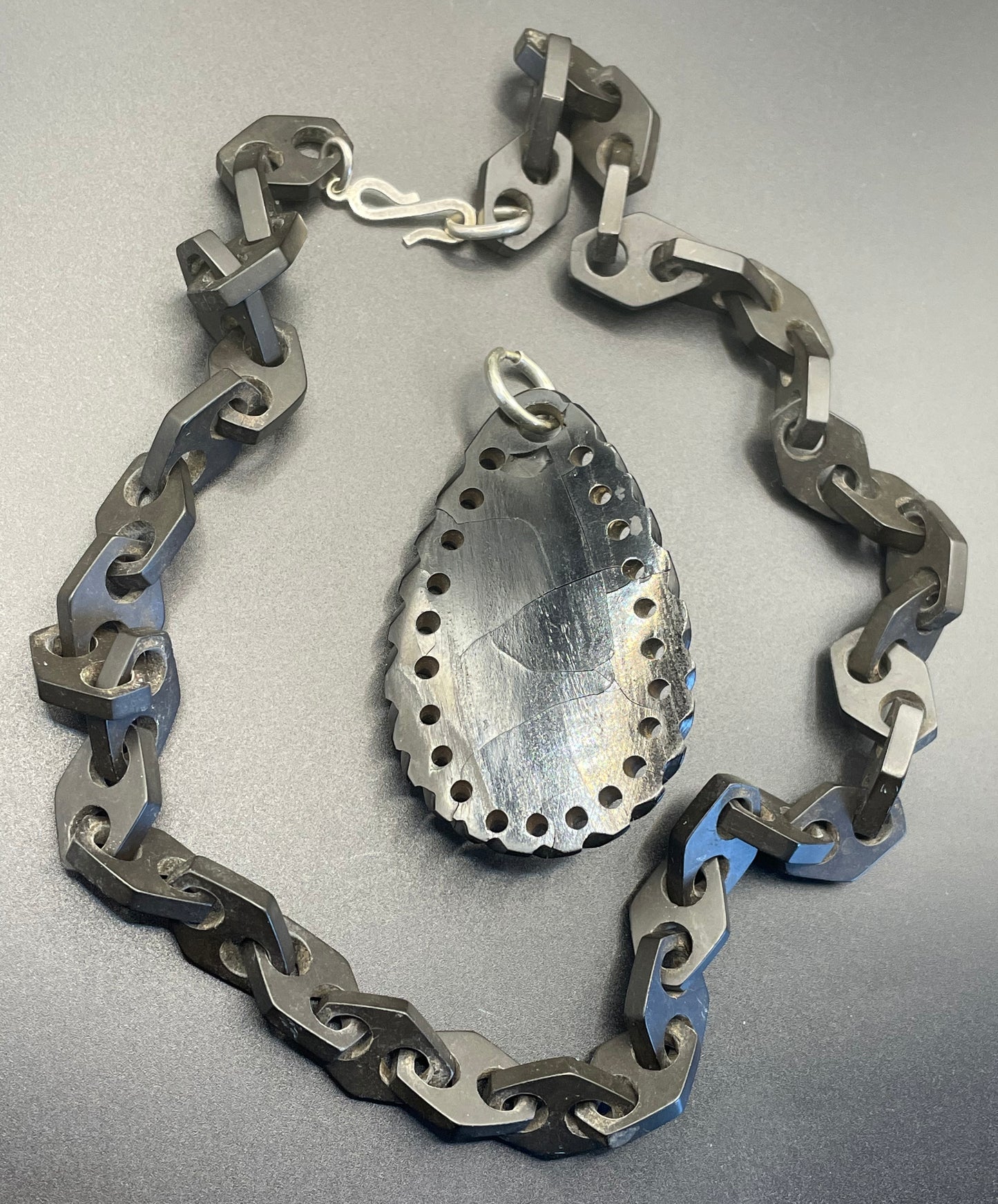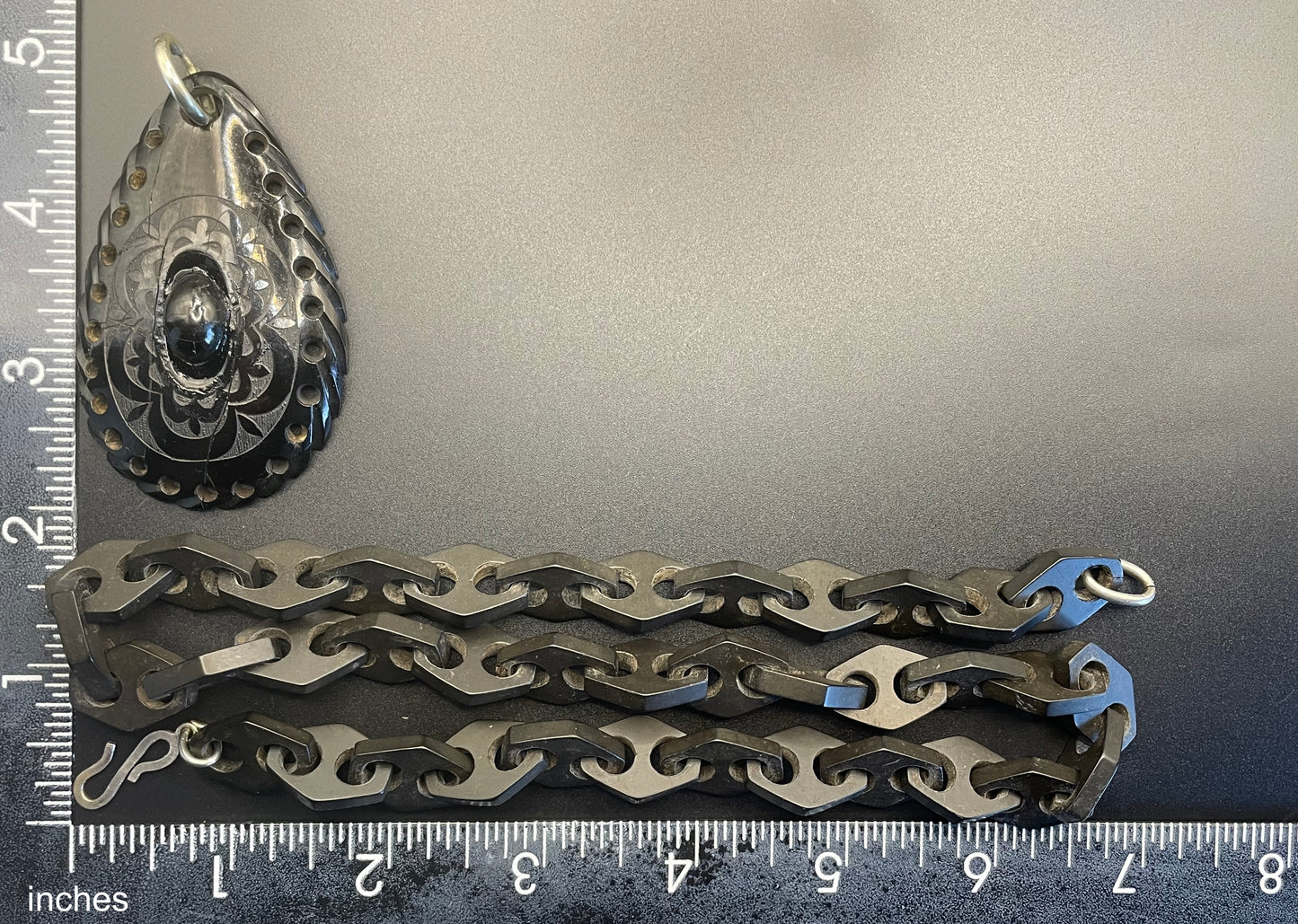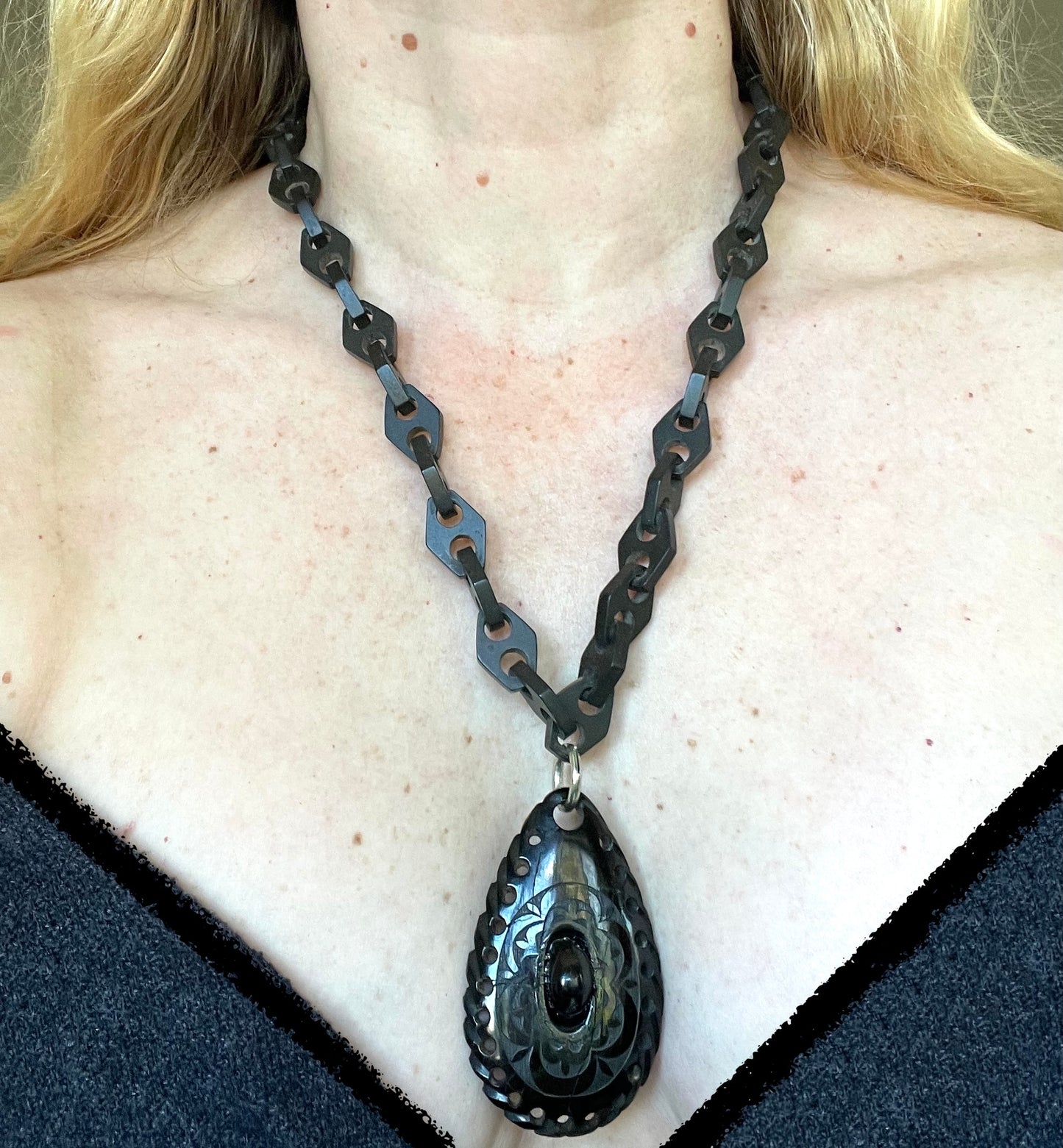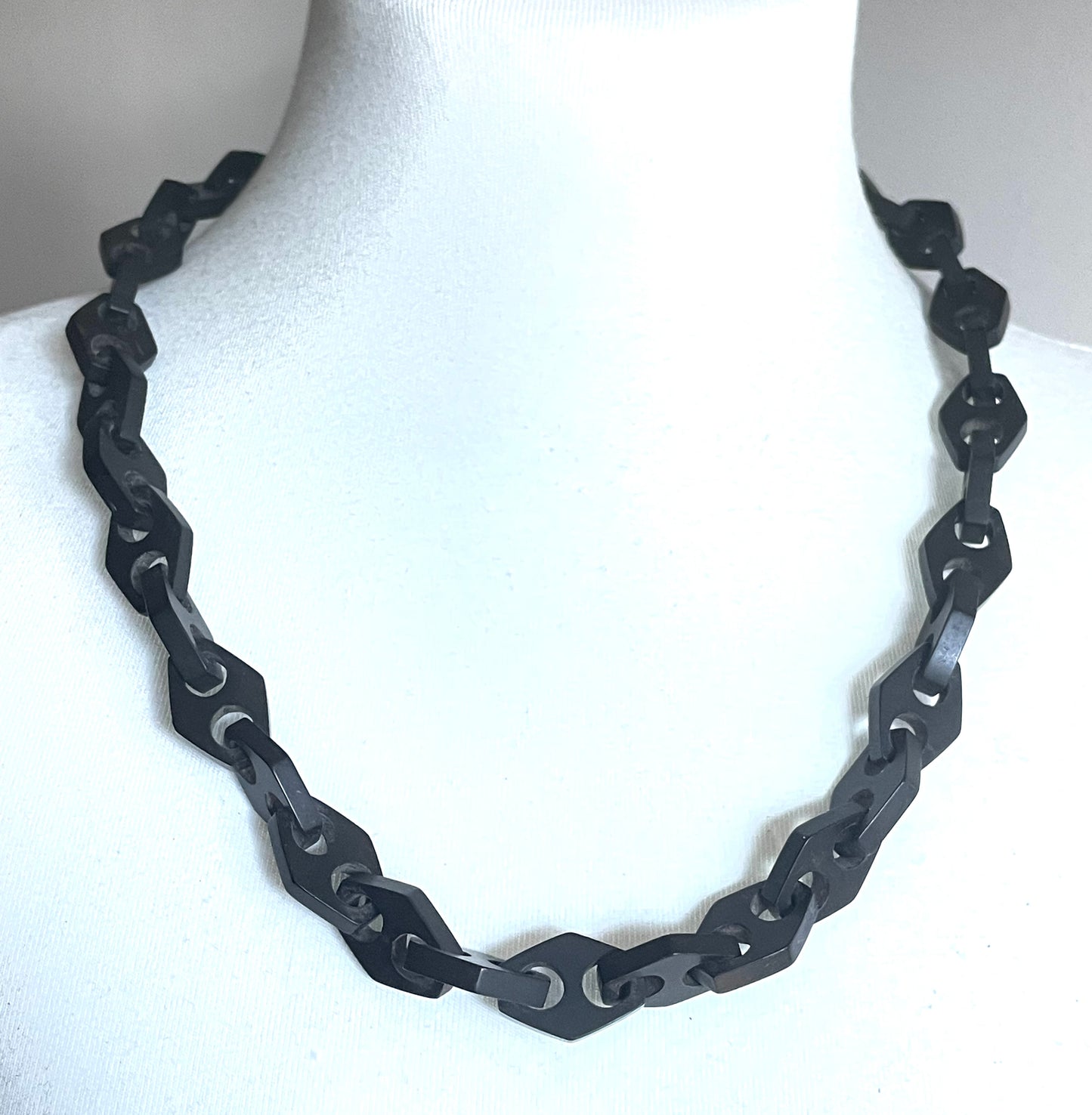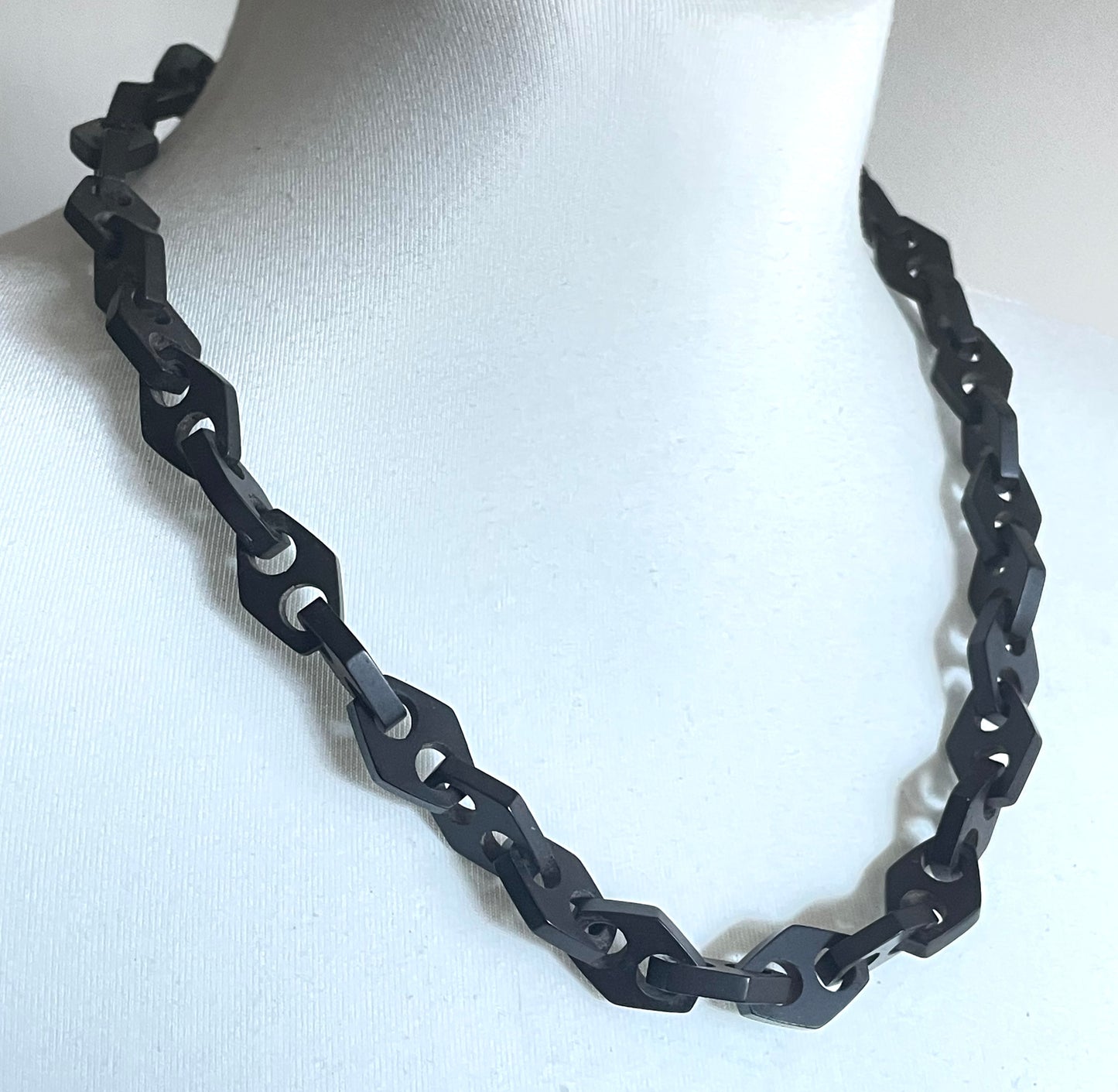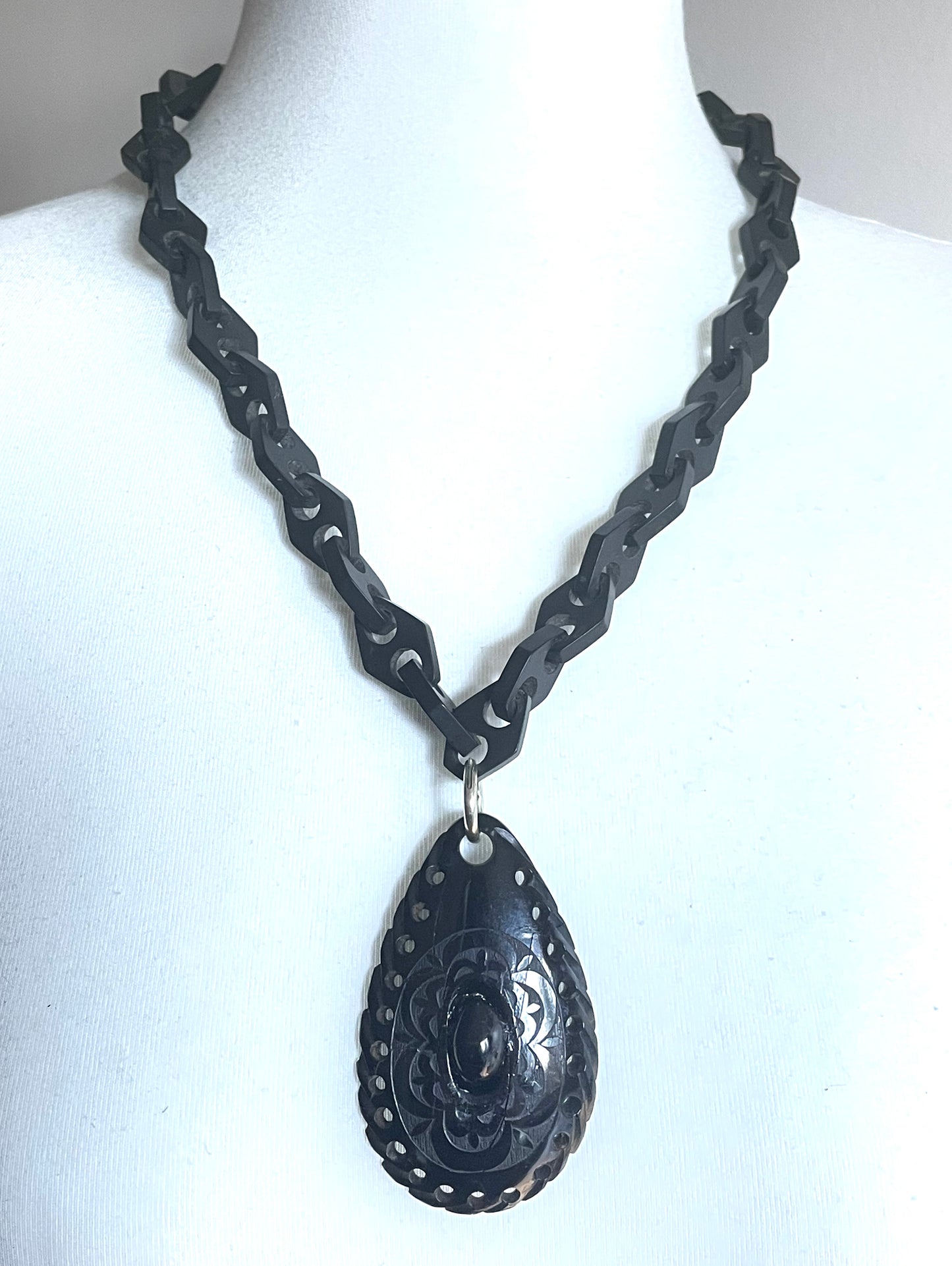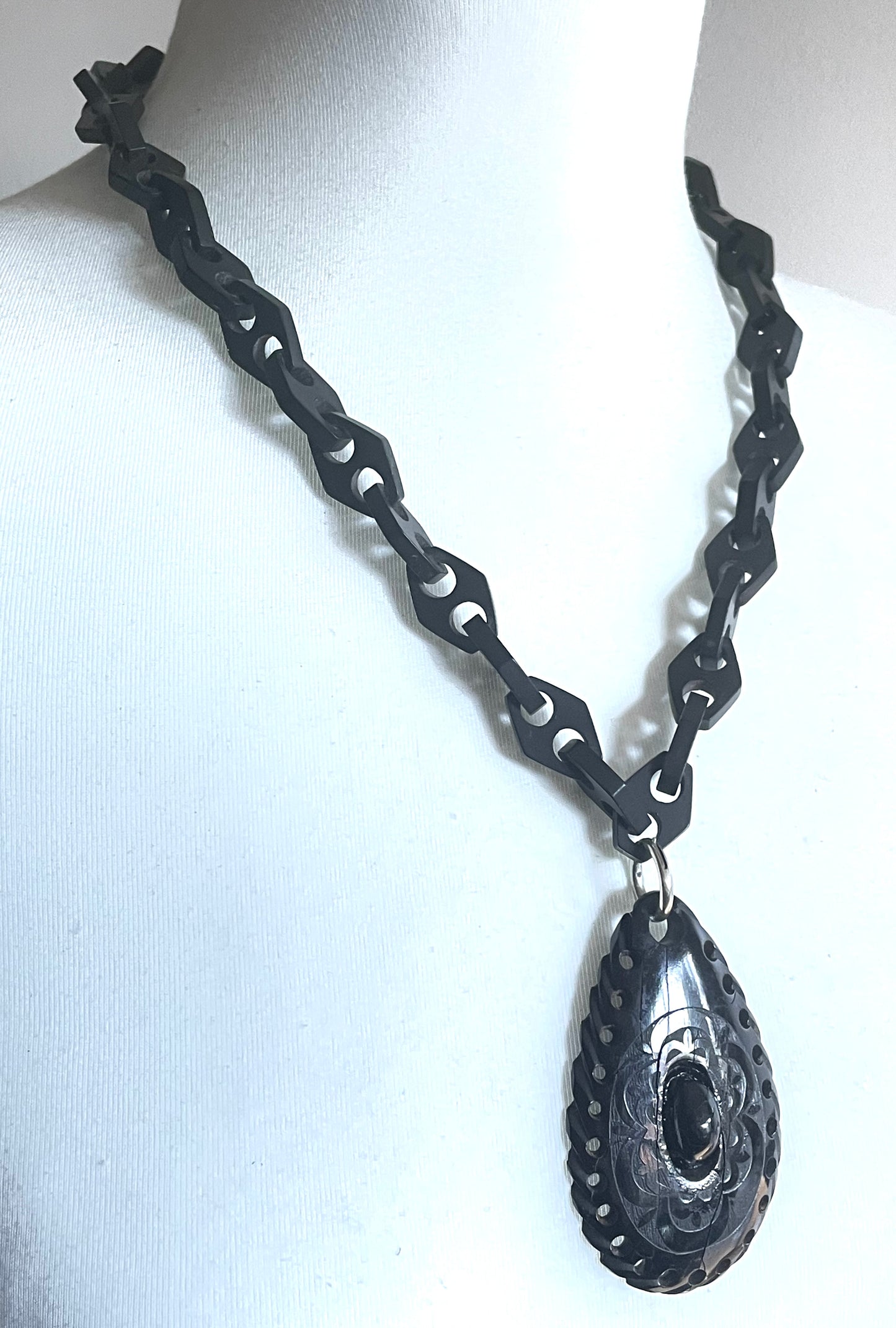Alice Lily
Antique Victorian vulcanite chunky chain necklace with huge, detachable carved Whitby jet teardrop pendant
Antique Victorian vulcanite chunky chain necklace with huge, detachable carved Whitby jet teardrop pendant
Couldn't load pickup availability
Fabulous antique vulcanite necklace with chunky chain links, sold alongside a large teardrop shaped carved Whitby jet detachable pendant.
Vulcanite is dark so appears similar to jet or bog oak and was used in Victorian mourning style jewellery. On close inspection, there is a brown hue to the substance which was man made from resin and sulphur. The pendant on the other hand is made from Whitby jet, a shinier natural substance formed underground over millions of years from fossilised wood.
The necklace chain fastens with a simple silver tone S-shaped hook clasp. The pendant is attached using an over-sized spring ring clasp as was often the case with Victorian pendants, lockets or cameos that would be attached to bookchain necklaces or Whitby jet or Vulcanite chains like this one. Please message me if you would prefer to purchase either the chain or the pendant separately.
The necklace is in very good antique condition. The pendant is in good antique condition though there are some surface cracks and fissures in the jet as often happens. Please look carefully at all photographs and close-ups, using the zoom function for a full condition report.
Vulcanite (also sometimes called "ebonite") was made by combining and heating sap of the Euphorbia or Ficus trees from Malaysia with sulphur. Invented in 1843 by Thomas Hancock, pieces made of vulcanite were almost always moulded, not carved, and it was used mainly in making jewellery.
Whitby Jet is organic and is naturally formed from fossilised wood from millions of years ago, commonly the wood of trees of the family Araucariaceae. The prehistoric wood gets washed up into a body of water and becomes covered by organic sediment. The pressure of the water and sediment over millions of years compacts the wood and slowly transforms it into what we know as Whitby Jet stone today.

